Using tools to move water: observing children's creative problem solving
By Peggy Ashbrook
Posted on 2009-03-22
I’m looking for ideas on how children can move water in different ways outdoors when the weather warms up. Ideally we’d have a shallow, slow-moving stream of pristine water nearby….
 Indoor water exploration, in small amounts in containers, develops problem-solving skills in children. They think it is wonderful to move water from one container to another. They eagerly took up this challenge and stayed focused on the task for 45 minutes. The objective was to explore the idea of “work” as expending energy to move water, to raise the question of what force(s) move water, and to give the children a few problems to solve. Each child had two containers and the task was to move water from one to the other. I demonstrated using a spoon to move the water and then moved around the table adding a drop of food coloring to the water in each container to make it easier to see. (The food color slowly diffuses into water unless the children mix it—another cool thing to observe and wonder about.)
Indoor water exploration, in small amounts in containers, develops problem-solving skills in children. They think it is wonderful to move water from one container to another. They eagerly took up this challenge and stayed focused on the task for 45 minutes. The objective was to explore the idea of “work” as expending energy to move water, to raise the question of what force(s) move water, and to give the children a few problems to solve. Each child had two containers and the task was to move water from one to the other. I demonstrated using a spoon to move the water and then moved around the table adding a drop of food coloring to the water in each container to make it easier to see. (The food color slowly diffuses into water unless the children mix it—another cool thing to observe and wonder about.)
Some interesting problem solving was seen during this activity. Children who have the tall quart carryout containers complained that the spoon could not hold much water, that the task was taking too long. The containers are too narrow to hold the spoon completely level so only a few drops stay in the spoon. Many children decided to solve the problem by picking up the containers and pouring the water into the second container. Most did this without asking permission or looking at the teacher, but several of the children who frequently need to be redirected from disruptive behavior looked up at the teachers as they did this, a look I interpret as meaning they thought they might be doing something wrong. Another child at the table felt the need to alert me to their neighbor’s pouring behavior, expecting me to correct it! I assured all that it was okay to pour the water, and even a good problem solving idea. At first the children approached the task seriously and sedately. As they switched seats to try different container sets conversation developed with the teachers’ prompts of “How is this container set different from the first set you used?”
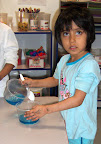
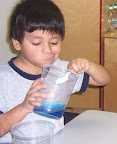
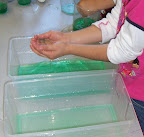.jpg)
While the children are engaged in the work of moving water I make comments about how scientists do work and sometimes have to change their equipment to make the work easier. During the hour I offer to trade tools with the children, showing first some laundry and baby formula scoops, and later, eye droppers and pipettes, baby nasal aspirators, syringe/irrigators, and pumps from liquid soap containers (supported with a surrounding clear plastic tube). The conversation expands along with the variety of tools.
As the children work, the teachers ask how they get the water to move, what tool is working “best,” and what is “pulling” the water down into the container from the spoon. The children demonstrate how they lift the water, or push and pull, or squeeze and release, the tools. Teachers introduce the word “force” and ask, “Which tool requires the most force to use? Which tool do you have to use the most muscles to move?”
The large laundry scoop is often seen as the best tool by all the children at first, but those at the tall container stations discard it in favor of droppers as the water level gets near the bottom. Children with poor motor skills do not favor the pumps which need two hands to secure and operate.
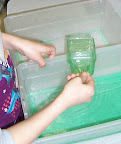.jpg)
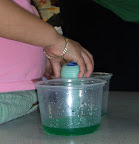
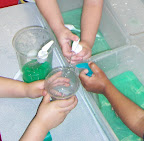.jpg)
The activity ended with a group recording session, marking tallies on a chart to show which tool they liked the best. A second chart was marked to show which tool the children thought moved the “most” water. Some children choose the tool that moved the largest amount of water at one time, others picked the tool that seemed to move water the fastest, and of course some just chose the empty section on the chart or the same section their friend picked.
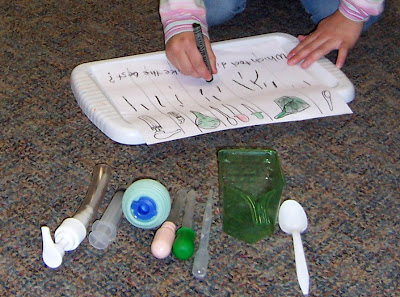
Repeating the activity with an emphasis on measuring would help the children realize that “the most” can be quantified.
What are your ideas for water exploration—indoors and out?
Peggy
Disclaimer: The views expressed in this blog post are those of the author(s) and do not necessarily reflect the official position of the National Science Teaching Association (NSTA).


